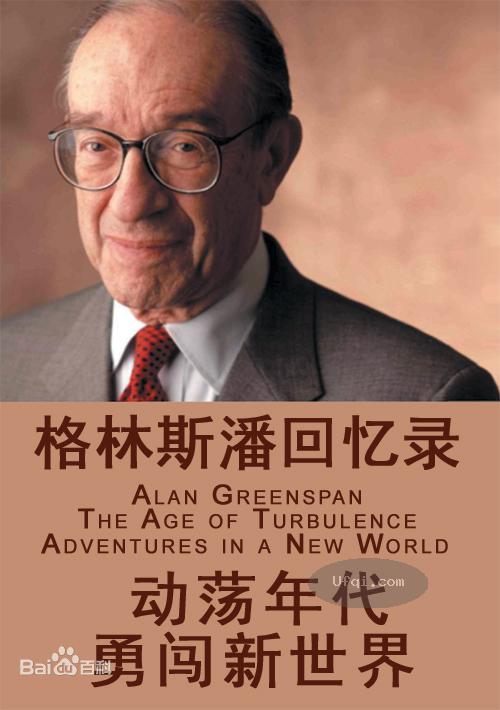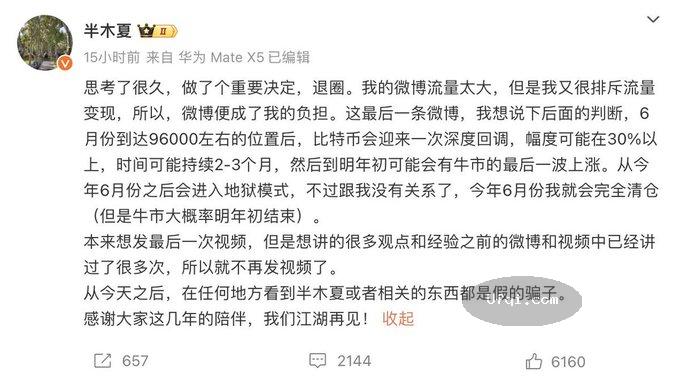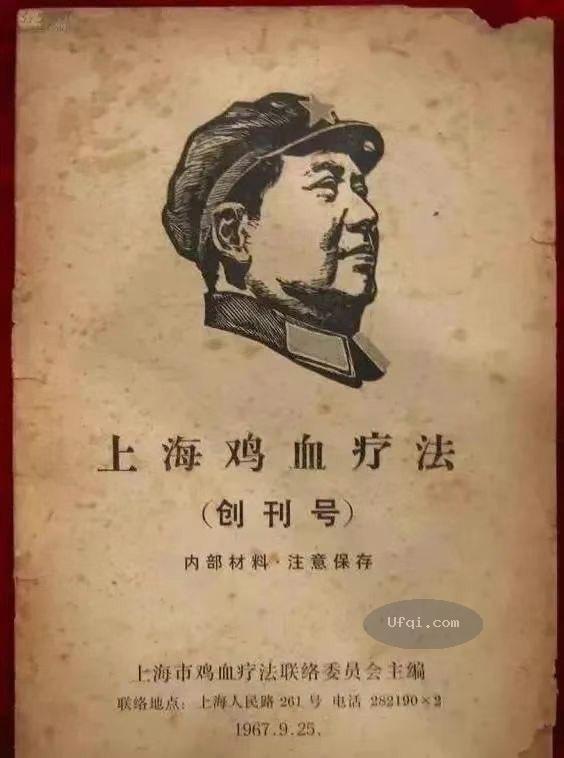


2023-05-16 , 8784 , 104 , 234
美联储主席艾伦格林斯潘回忆录——动荡年代:勇闯新世界-the age of turbulence-41
To me such reactions merely showed how attached Americans were becoming to low, stable interest rates. Behind the closed doors of the Fed,
several of the bank presidents had pushed for twice as large an increase.
Fearing a panicky market reaction to too sharp a rise, I had urged my colleagues
to keep this initial move small.
We continued to apply the brakes throughout 1994, until by year end the fed funds rate stood at 5.5 percent. Even so, the economy had a very good year: it grew a robust 4 percent, it added 3.5 million new jobs, productivity increased, and business profits rose. Equally important, inflation did not increase at all—for the first time since the 1960s, it had been under a 3 percent annual rate for three years running.
Low to stable prices were becoming a reality and an expectation—so much so that in late 1994,
when I spoke to the Business Council, an association made up of the heads of major companies, a few of the CEOs were complaining that it was hard to make price increases stick. I was unsympathetic.
"What do you mean, you're having problems?"
I asked.
"Profit margins are going up. Stop complaining."
For decades, analysts had wondered whether the dynamics of the business cycle ruled out the possibility of a "soft landing" for the economy—a cyclical slowdown without the job losses and uncertainty of a recession.
The term "soft landing" actually came from the 1970s space race, when the United States and the Soviet Union were competing to land unmanned probes on Venus and Mars. Some of those spacecraft made successful soft landings, but the economy never had; in fact, the expression wasn't even used at the Fed. But in 1995, a soft landing was exactly what took place.
Economic growth slowed throughout the year, to an annualized rate of less than 1 percent in the fourth quarter, when our metaphoric spacecraft gently touched down.
In 1996, the economy picked back up again. By November, when President Clinton would win reelection, activity was expanding at a solid 4 percent rate.
155
The media celebrated a soft landing long before I was willing to; even in December 1996 I was still cautioning colleagues,
"We haven't fully completed the process. Six months from now we could run into a recession."
But in hindsight the soft landing of 1995 was one of the Fed's proudest accomplishments during my tenure.
All of this lay hidden in the future, of course, as the FOMC was tightening rates. Knowing when to start tightening, and by how much, and most important, when to stop was a fascinating and sometimes nerve-racking intellectual challenge, especially because no one had tried it this way before.



It didn't feel like "Oh, let's execute a soft landing"; it felt more like "Let's jump out of this sixty-story building and try to land on our feet." The toughest call for some committee members was the rate hike that proved to be the last—a 0.5 percent increase on February 1,1995. "I fear that if we act today, our move may be the one we turn out to regret," said Janet Yellen, a governor who would later become chairman of Clinton's Council of Economic Advisors. She was the most vocal advocate for shifting to a stance of wait and see. The increase, which we went on to adopt unanimously that day, brought the fed funds rate all the way to 6 percent—double where it had stood when we'd started less than a year before.
Everyone on the FOMC knew the risks. Had we turned the screw one time too many? Or not enough? We were groping through a fog.
The FOMC has always recognized that in a tightening cycle, if we stop too soon, inflationary pressures will re-surge and make it very difficult to contain them again. We therefore always tend to take out the insurance of an additional fed funds increase, fully expecting that it may not be necessary. Ending the course of monetary antibiotics too soon risks the reemergence of the infection of inflation.
For President Clinton, meanwhile, 1994 had been a miserable year. It was marked by the collapse of his health care initiative, followed by the stunning loss of both the House and the Senate in the midterm elections.
The Republicans won on the basis of Newt Gingrich's and Dick Armey's "Contract with America," an anti-big-government plan that promised tax cuts, welfare reform, and a balanced budget.
Within weeks Clinton was put to the test again. In late December, Mexico revealed that it was on the brink of financial collapse.
156
A DEMOCRAT'S AGENDA
Its problem was billions of dollars of short-term debt; borrowed when the economy
was thriving. Lately that growth had slowed, and as the economy weakened,
the peso had to be devalued, making the borrowed dollars increasingly expensive to repay. By the time Mexico's leaders asked for help,
government finances were in a downward spiral, with $25 billion coming due in less than a year and only $6 billion in dollar reserves, which were dwindling fast.
None of us had forgotten the Latin American debt crisis of 1982, when an $80 billion default by Mexico had triggered a cascade of emergency refinancings in Brazil, Venezuela, Argentina, and other countries. That episode nearly toppled several giant U.S. banks, and had set back economic development in Latin America by a decade. The crisis of late 1994 was smaller. Yet the risk was hard to overstate. It, too, could spread to other nations,
and because of the growing integration of world financial markets and trade, it threatened not just Latin America but other parts of the developing world. What's more, as NAFTA demonstrated, the United States and Mexico were increasingly interdependent. If Mexico's economy were to collapse, the flow of immigrants to the United States would redouble and the economy of the Southwest would be clobbered.
The crisis hit just as Andrea and I were leaving on a post-Christmas getaway to New York. I'd booked us into the Stanhope, an elegant Fifth Avenue hotel directly across from Central Park and the Metropolitan Museum of Art. We'd been looking forward to a few days of concerts, shopping,
and just wandering around in the relative anonymity of the city where we'd met. Ten years had passed since the snowy evening of our first date for dinner at Le Perigord on East Fifty-second Street, and while this wasn't a formal anniversary, we always liked to make it back to the city and the site of that first date between Christmas and New Year's.



UfqiLong
As soon as we arrived, though, the phone began to ring—it was my office at the Fed. Bob Rubin, now the treasury secretary designee, urgently needed to talk about the peso. Bob was slated to take over officially from Lloyd Bentsen, who was retiring, right after New Year's Day, but for all intents and purposes he was already on the job. I'm sure he'd been hoping for an easier transition than this. Instead he was facing a baptism by fire.
157
Andrea realized instantly what the phone call meant.
On any foreign financial crisis affecting the United States, the Treasury Department takes the lead but the Fed always gets involved.
"So much for romance/' she sighed. She understood me and my job too well after all these years—I was grateful for her generosity and patience. So as the Mexico crisis unfolded, she went shopping and visited friends, and I spent the entire stay in our hotel room on the phone.
In the following weeks, the administration huddled with Mexican officials,
the International Monetary Fund, and other institutions. The IMF was prepared to offer Mexico what help it could, but it lacked the funds to make a decisive difference. Behind the scenes I argued, as did Bob Rubin and his top deputy, Larry Summers, and others, that U.S. intervention should be massive and fast. To forestall a collapse, Mexico needed sufficient funding to persuade investors not to dump pesos or demand immediate repayment of their loans. This was based on the same principle of market psychology as piling currency in a bank's window to stop a run on the bank—something U.S. banks used to do during crises in the nineteenth
century.
In Congress, remarkably, leaders from both parties were in accord; potential chaos in a nation of eighty million people with whom we shared a two-thousand-mile border was too serious to ignore. On January 15, President Clinton; Newt Gingrich, the new House Speaker; and Bob Dole, the new Senate majority leader, jointly put forward a $40 billion package of loan guarantees for congressional approval.
As dramatic as that gesture was, within days it became clear that politically the bailout didn't have a prayer. Americans have always resisted the idea that a foreign country's money problems can have major consequences for the United States. Mexico's crisis, coming so soon after NAFTA, aggravated this isolationist impulse. Everyone who'd fought NAFTA—labor,
consumer, and environmental activists, and the Republican right—rose up again to oppose the rescue. Gene Sperling, one of Clinton's top economic advisers, summed up the political dilemma: "How do you deal with a problem that to the public doesn't seem important, that seems like giving money away, that seems like bailing out people who made dumb investments?"
158
(未完待续, To be contd)



🔗 连载目录
🤖 智能推荐








